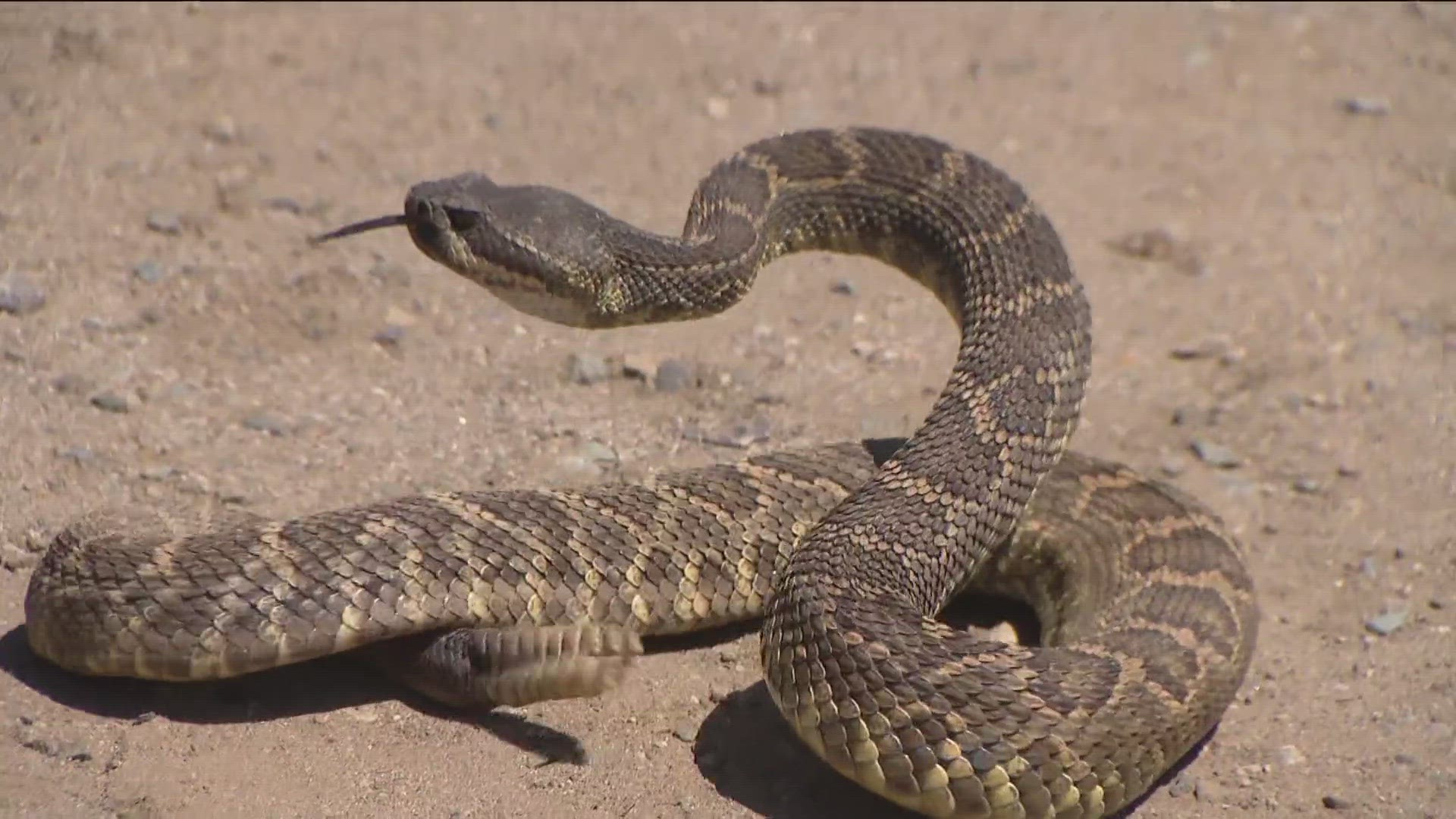ESCONDIDO, California — Local researchers are launching a new program with the aim of tracking and understanding rattlesnakes through non-invasive procedures, using advanced technology to follow the elusive creatures with more accuracy than ever before.
The partnership between The San Diego Zoo Wildlife Alliance and San Diego State University comes at a vital time, as our county becomes more urban – destroying populations of native snakes. We’ve all heard the threatening rattle – telling predators they’ve come too close. But for researchers trying to understand rattlesnakes in the wild, their technology has never quite cut it.
“They are not built the way that we are built,” said Rulon Clark, a Professor of Biology at San Diego State University. “They are very, very low energy, ectothermic animals that spend like 99% of their time sitting still, not moving, trying to remain hidden either from their own predators or hidden from their prey so they can ambush them. If you sit and try to watch a snake, the way you would watch a bird you will see nothing.”
That is, until new technology has allowed for an innovative new way to follow these creatures by attaching non-invasive trackers. Researches are now using glue and thread as opposed to a surgical process, allowing them to track 75 data points a second, 24 hours a day on these snakes.
“The goal of the project eventually is to build this really comprehensive, fine-scale behavioral data set for this very important species so we can understand kind of its ecological relationship to other animals in the environment and the relationship to each other, and all sorts of other important things about their conservation and ecology,” added Clark.
“We like to build in this habitat and we like to live in it,” said Jeff Lemm, Conservation Program Specialist with the San Diego Zoo Wildlife Alliance. “So, right off the bat, they’re losing their habitat. The habitat is fragmented, which disrupts gene flow, so the genetics are getting all torn apart because these animals can’t reach each other. Roads are a big problem with that and with actually killing the snakes.”
Researchers hope the data will uncover how snake behavior has adapted or failed to adapt, which could help determine how we as humans can keep their population stable.
“If you think down the line, you can use that kind of information to plan out roads, to plan out infrastructure to plan wildlife crossings,” noted Charlie de la Rosa, Natural Lands Program Manager with the San Diego Zoo Wildlife Alliance.
The research is all taking place on 900 acres of undeveloped land around the San Diego Zoo Safari Park, which is home to 16 species of native snakes. That’s more than any other site in Southern California. It all helps to inform our understanding of the larger role these creatures play and how we can protect their biodiversity.
“They’re very important predators,” Lemm added. “They control the populations of rats and rabbits and squirrels and things like that. But, they’re also an important food source for a lot of other predators, such as birds of prey, bobcats, coyotes, foxes things like that. Big part of the food chain.”
WATCH RELATED: Hot weather brings out rattlesnakes across San Diego (Aug. 28, 2023)

